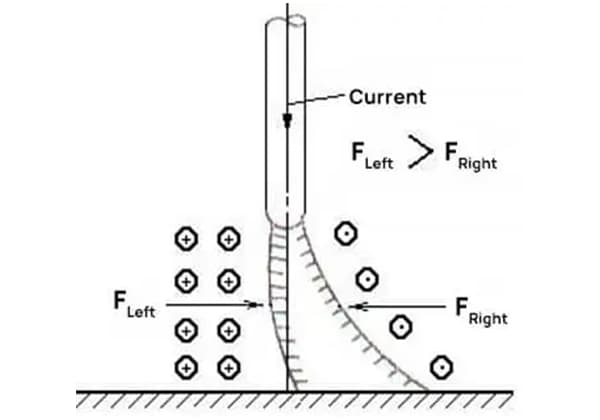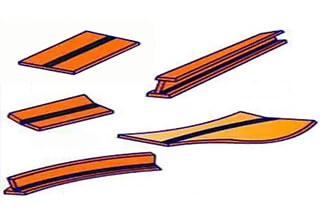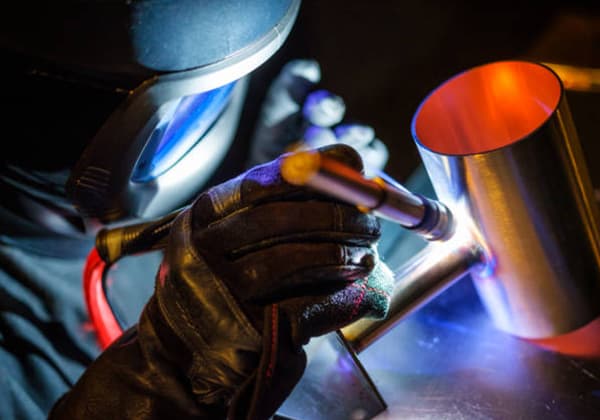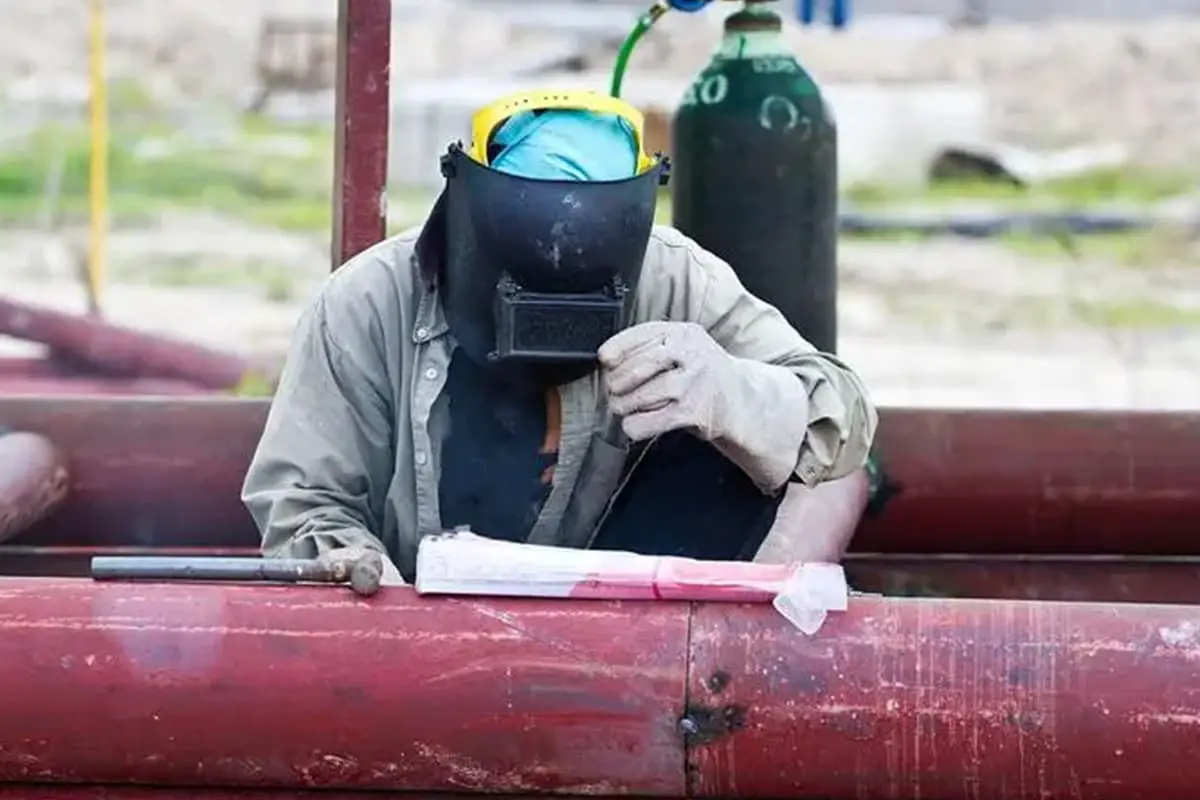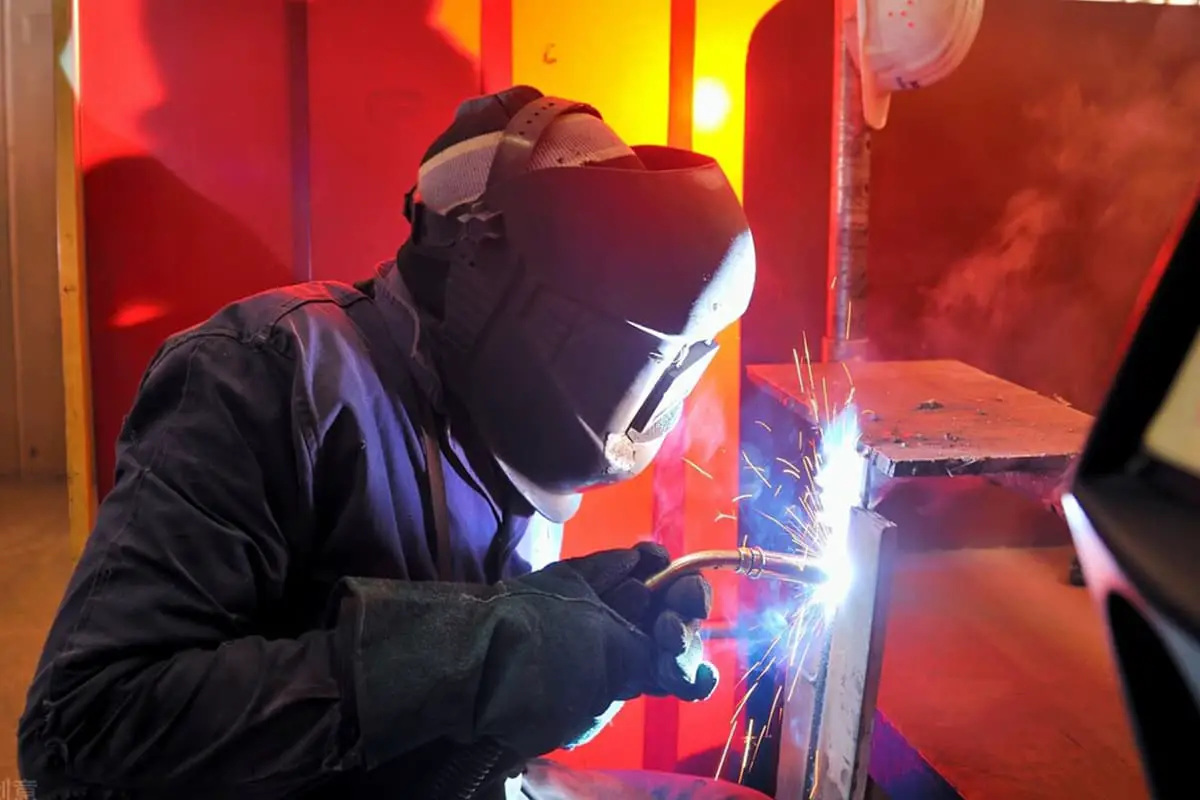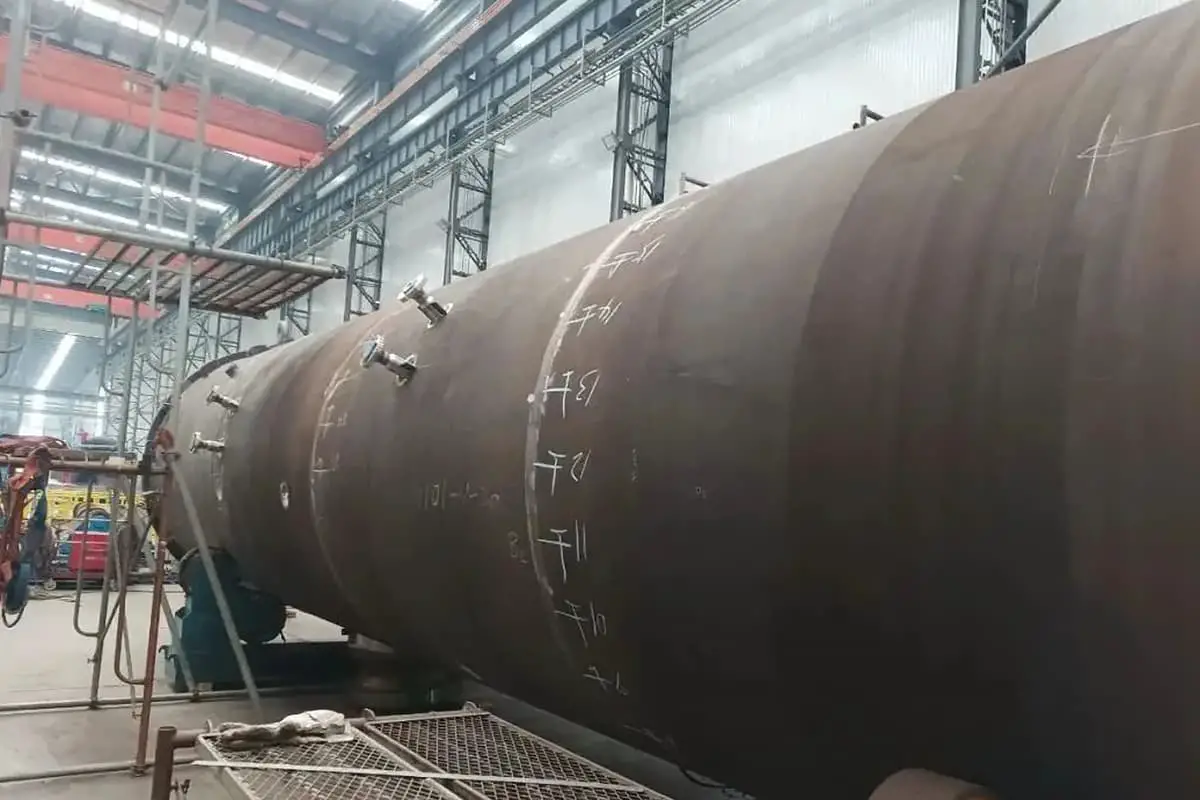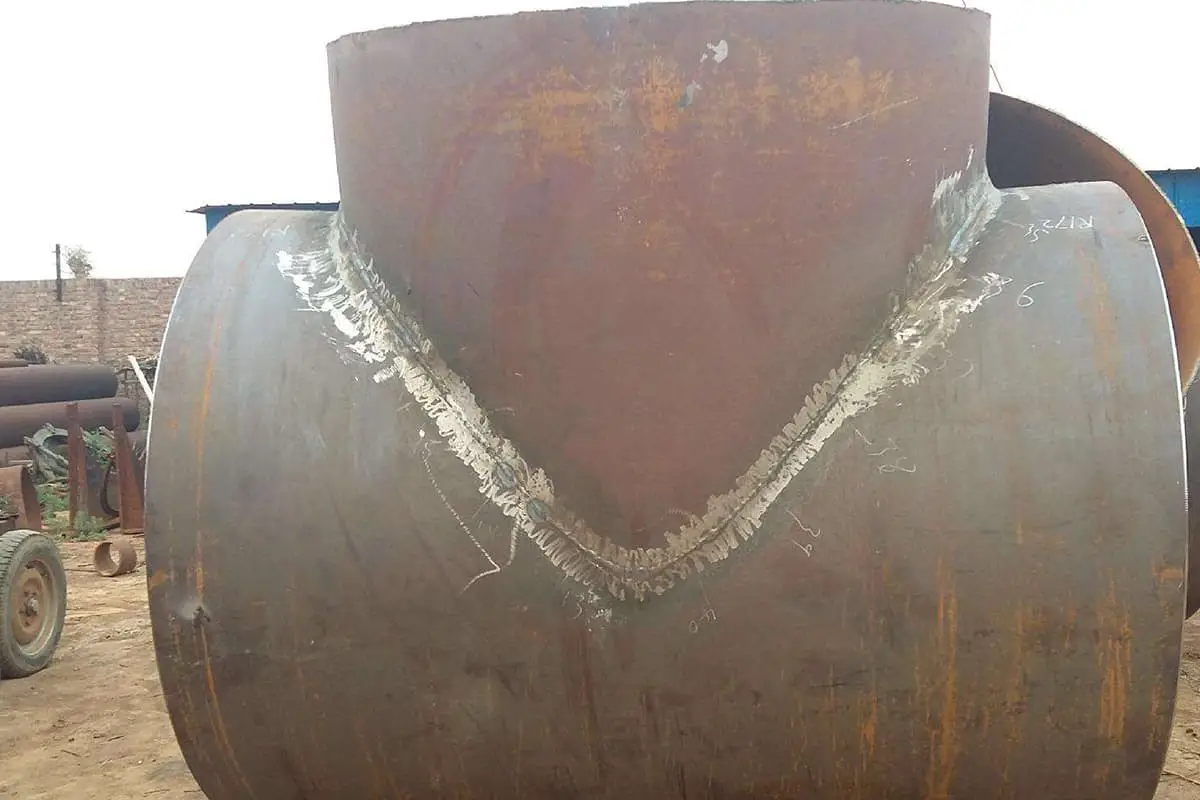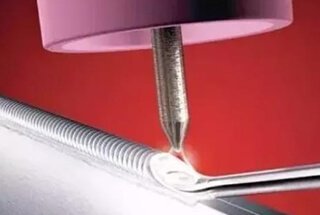
Why does argon arc welding sometimes produce pores, and how can we fix it? Welding porosity, often caused by impurities, improper gas flow, or incorrect technique, can weaken welds and lead to failure. This article delves into the main reasons behind porosity in argon arc welding and offers practical solutions to prevent it, ensuring stronger, more reliable welds. Learn how to identify and eliminate these issues to enhance welding quality and durability.
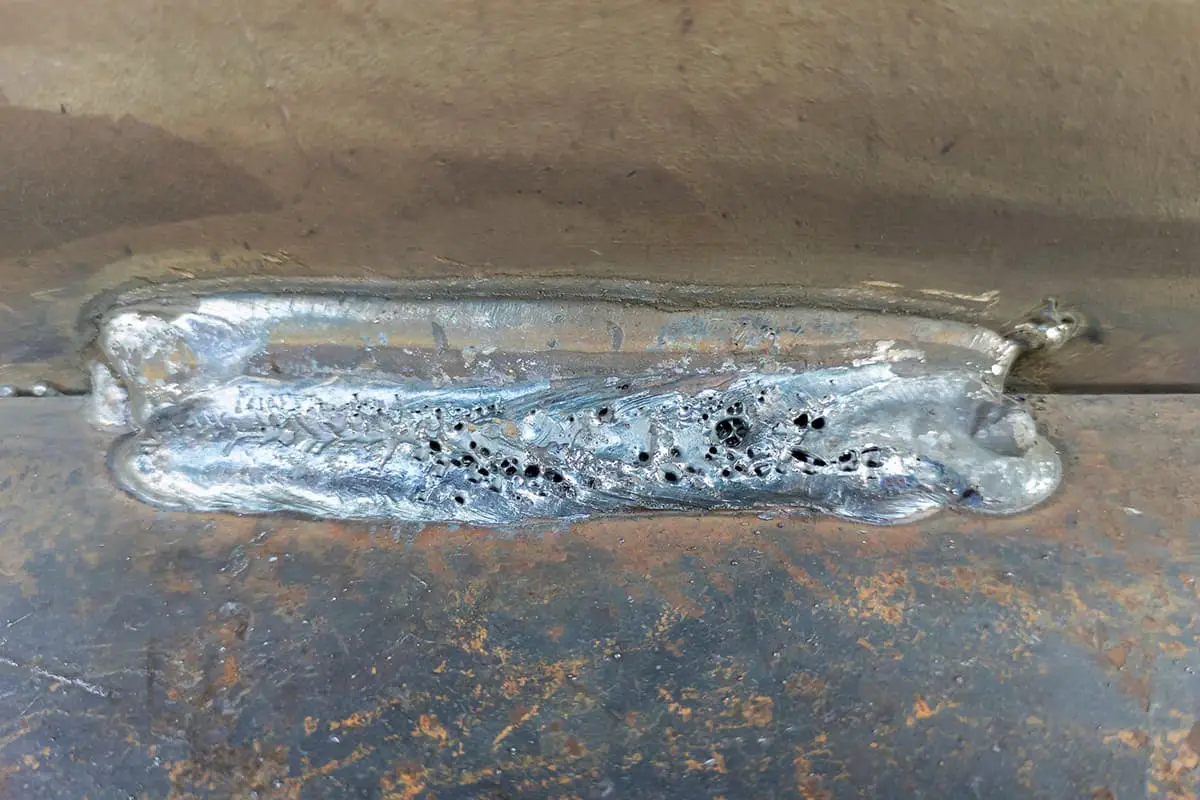
Argon arc welding is an electric arc welding method with inert gas “argon” as the protective gas.
Argon is sprayed from the nozzle to form an inert gas protective layer in the welding area to isolate the invasion of air, so as to protect the arc and molten pool.

This welding method has many advantages:
Therefore, it has been widely used in practical production.
However, due to the weak wind resistance of argon arc welding, it is particularly sensitive to rust, water and oil, and has strict requirements on gas purity, groove cleaning and welding process, which is easy to produce pores.
Combined with the production practice, this post analyzes the problem of porosity in argon arc welding and puts forward some treatment methods and precautions.

Gas pores are cavities formed in welding seams when gas bubbles in the molten pool fail to escape during solidification, a common and major welding defect in TIG argon arc welding. Their shapes can be spherical, oval, spiral, or worm-like.
Those inside the welding seam are called internal gas pores, while those exposed on the surface of the seam are external gas pores. The size of gas pores varies; they can exist individually, cluster together, or distribute continuously along the seam.
Gas pores, being volumetric defects, significantly impact the performance of the welding seam. They primarily reduce the load-bearing capacity of the seam. This is because gas pores occupy a certain volume of the welding seam, reducing the effective working cross-sectional area and, consequently, the mechanical performance of the seam.
This particularly decreases the plasticity of the seam as well as its bending and impact strength. If gas pores penetrate the surface of the welding seam, especially if they penetrate the surface in contact with the medium, the medium will exist within the cavities.
When the medium is corrosive, concentrated corrosion occurs, making the cavities grow deeper and larger until corrosion penetration and leakage occur. This compromises the integrity of the welding seam and in severe cases, can lead to the destruction of the entire metal structure.
Therefore, preventing gas pores in the welding seam and ensuring the quality of welding should receive serious attention.
Throughout the welding process, the surroundings of the molten pool are filled with complex gases, primarily from the surrounding air and impurities on the workpiece, such as rust, paint, and grease, which produce gas when heated.
All these interact continuously with the metal molten pool. Some gases enter the molten pool through chemical reactions or dissolution, causing the liquid metal in the molten pool to absorb significant amounts of gas. If these gases are expelled quickly, even if the molten pool crystallizes quickly, gas pores will not form.
However, if gases form during the crystallization process of the molten pool and the crystallization process is too fast for the gases to escape, they will remain in the welding seam and form gas pores.
The formation of gas pores in TIG welding seams is often the result of the combined action of several gases, with H2 and N2 playing the main roles. A detailed analysis is as follows:
Effects of H2:
H2 in the welding zone comes from various sources. Some compositions, crystalline water, and impurities on the workpiece surface all contain components of hydrogen. Additionally, the steel smelting process also contains hydrogen.
Under the high temperatures of the electric arc, these components form bubbles that rapidly dissipate outwards. If the H2 cannot float out during the cooling process of the welding seam, it will form gas pores.
Effects of N2:
N2 mainly comes from air. The weight percentage of N2 in base metals and welding wires is not very high, and it exists in steel and other iron alloys as oxide solid solutions and other forms.
The solubility of N2 in steel varies drastically with temperature, and the precipitated N2 forms bubbles that are expelled from the molten pool. Bubbles that cannot be expelled in time remain in the welding seam and form gas pores. The formation of gas pores occurs when the arc and the metal in the welding molten pool are exposed to air without sufficient shielding.
When welding carbon steel, the purity of argon shall not be less than 99.7%, when welding aluminum, it shall not be less than 99.9%, and the purity of argon used for welding titanium and titanium alloy is as high as 99.99%.
Method for detecting argon Purity:
(l) Weld the polished steel plate or pipe without welding wire, and then remelt it on the weld bead for many times. If there are pores, it indicates that argon is impure.
(2) During welding, there is a very small spark around the arc, which also indicates that argon is impure.
(3) Sometimes, when the purity of argon is close to the purity requirements of welding requirements, it can not be detected by the above two detection methods, but when welding welded junctions with gaps, intermittent pores will be generated at the root of the weld, or surface pores will be generated during cover welding, or there is a layer of oxide skin on the surface of the weld bead.
(4) Spot weld a few spots on the nickel plate. If the spot is silver white and the surface is like a mirror, it indicates that the purity of argon is qualified.
The argon flow is too small and the anti-wind interference ability is weak;
Too large, the gas flow rate is too large, and the near-wall laminar flow formed when passing through the nozzle is very thin.
After the gas is ejected, it will be disordered quickly, and it is easy to involve the air, which will deteriorate the protection effect of the molten pool.
Therefore, the flow of argon must be appropriate to stabilize the gas flow.
Air leakage at the air belt interface or air belt will cause too small gas flow during welding, and the air will be sucked into the air belt, resulting in poor protection effect.
If the wind is slightly strong, the argon protective layer will form turbulence, resulting in poor protection effect.
Therefore, windproof measures shall be taken when the wind speed is > 2m / S;
When welding pipes, the pipe orifice shall be blocked to avoid ventilation in the pipe.
The nozzle diameter is too small. When the effective protection range of argon around the arc is less than the molten pool area, it will cause poor protection and produce pores.
Especially for field operation and welding of large pipes, larger diameter nozzles shall be used to effectively protect the arc and molten pool.
The distance is small and the sensitivity to crosswind is small;
The distance is large and the ability to resist wind interference is weak.
When the pressure in the gas cylinder is less than 1MPa, it shall be stopped.
If the angle of the welding gun is too large, on the one hand, the air will be brought into the molten pool, on the other hand, the argon flow on the long arc side will deteriorate the protection effect of the arc and molten pool.
Unstable gas outlet of flowmeter, large or small, will affect the protection effect.
When using the argon arc welding gun with control button, vent gas before welding to avoid excessive pressure in the gas zone, resulting in instantaneous excessive gas flow and air holes during arc striking.
The tungsten electrode clamp is not matched, the blocked gas path is not smooth, and the protective gas flows out from one side of the nozzle, which cannot form a complete protective ring.

Submerged arc welding wire shall not be used to replace manual TIG welding wire, otherwise intermittent or continuous pores will be generated.
Rust, oil stain and water on the surface of welding wire will directly promote a large number of pores in the weld.
If there is interlayer in the plate or pipe, the impurities in the interlayer will promote the generation of pore defects.
Boiling steel (with high oxygen content and many impurities) cannot be welded by argon arc welding.
The tungsten extreme part is not sharp, the arc drift is unstable, the protective area of argon is destroyed, and the metal in the molten pool is oxidized to produce pores.
When high-frequency arc striking equipment is used, the temperature of the tungsten extreme part is low at the beginning of arc striking, so it does not have sufficient thermal emission electron capacity.
Electrons are easy to be emitted from the place with oxide film and climb along the electrode to find the place with oxide.
At this time, the arc is elongated and the protection effect of argon on the molten pool becomes worse.
When the temperature of the tungsten electrode rises, electrons are emitted from the front end of the tungsten electrode.
The arc length and phase strain are short.
At this time, the oxide on the tungsten electrode surface can be eliminated as long as it is polished clean.
The groove surface and the range of 10mm on both sides of the groove shall be polished to prevent the magnetic generated by the arc during welding from sucking the rust near the molten pool into the molten pool.
The welding speed is too fast.
Due to the influence of air resistance on the protective gas flow, the argon gas flow will bend and deviate from the electrode center and weld pool, which is not good for weld pool and arc protection.
During arc extinguishing, the arc extinguishing method of attenuating current or adding welding wire, bringing the arc to the groove side and reducing the arc shall be adopted.
Do not stop the arc suddenly, resulting in the high-temperature molten pool separated from the effective protection of argon gas flow, so as to avoid pores or shrinkage in the arc pit.
The welding current is too small, the arc is unstable, and the arc drifts irregularly at the end of the tungsten electrode, damaging the protective zone.
If the welding current is too large, the arc will disturb the air flow and the protection effect will become worse.
If the tungsten electrode extends too long, the protection effect of argon on arc and molten pool becomes worse.
Though there are various causes of porosity, choosing the correct welding process and enhancing the welder’s operational skills are fundamental ways to prevent it.
TIG welding is particularly sensitive to oil, rust, and water, which can easily lead to porosity, hence a high surface quality of the base material is required. It’s crucial to perform strict cleaning prior to welding, polishing the area within 10-15mm inside and outside the bevel of the workpiece to remove surface oxide films, impurities such as oil and moisture, and expose the metallic luster.
Similarly, the oil and rust on the surface of the welding wire need to be sanded until the metal gleams.
Argon is an inert gas that doesn’t decompose at high temperatures or react with the weld metal to cause oxidation. During argon arc welding, the purity of argon should be greater than 99.95%. Moreover, when the pressure inside the argon cylinder falls below 2.0MPa and the moisture content increases, its use should be discontinued.
The argon flow rate must be appropriate, determined by the following empirical formula: Q=K·D, where Q represents the argon flow rate, D is the nozzle diameter, and K is a coefficient (0.8-1.2). Thus, the argon flow rate is generally 6-9L/min. The gas path must also be kept clear, with no blockage or leakage occurring.
The nozzle diameter can be determined by the following empirical formula: D=(2.5-3.2)d, where D stands for the nozzle diameter, and d for the tungsten electrode diameter. Based on this formula, the appropriate nozzle diameter is generally 6-12mm.
If the extension length of the tungsten electrode is too large, it increases the distance between the nozzle and the workpiece, reducing the protective effect. Conversely, if the extension length is too short, though the protection effect may be good, it can obstruct the welder’s line of sight and cause the tungsten electrode and welding wire to collide, short circuiting and preventing welding.
Welding speed is one of the primary welding parameters. If the speed is too fast, the protective gas will deviate from the tungsten electrode and pool, leading to a reduced protective effect and porosity. It can also impact the formation of the weld seam, so an appropriate welding speed must be selected when welding.
Sending argon 3-4 seconds before arc initiation can push out the air in the tube, ensuring the arc is initiated in a gas-protected environment and preventing the tungsten electrode and pool from oxidizing and creating pores. Delaying the gas shutoff can achieve a cooled, protected pool, as well as avoid defects such as arc pits, cracks, and porosity at the arc termination point. Hence, mastering the correct arc extinguishing method is essential.
Proficiency in operational skills is a vital step in preventing porosity, and each welder needs to possess a strong foundation of these essential abilities. The welding torch, wire, and workpiece must maintain a correct position and relative angle, with coordinated movements.
During welding, the arc needs to be steady, with a consistent height, and abrupt fluctuations are strictly prohibited to prevent gas from instantaneously entering the molten pool and causing porosity. At the same time, observing the changes in the molten pool to enhance the capability to expel porosity is important.
When welding in all positions, the welding torch, wire, and workpiece must maintain a certain distance from each other. The direction is generally from bottom to top, i.e., in the order of up – vertical – flat. When extinguishing the arc, it’s crucial to avoid the appearance of arc pits and shrinkage holes, ensuring that the weld seam is not lower than the base material.
This can be achieved by increasing the weld seam, i.e., slowing down the welding speed when extinguishing the arc, increasing the backward tilt of the torch, and increasing the wire feed when the molten pool temperature is too high. If needed, the arc can be extinguished and re-ignited until the arc pit is filled.
In conclusion, TIG argon arc welding has excellent welding characteristics. Long-term production practice has proven that adopting the above-mentioned process measures can effectively control the generation of porosity, significantly improving the rate of first-time flaw detection and the quality of the welded joint.
Although there are many factors causing pores in manual TIG welding, as long as we understand the characteristics of argon arc welding, investigate the influencing factors one by one according to the actual situation, and eliminate all factors causing pores in the weld during argon arc welding, we can improve the welding quality in the actual production.

